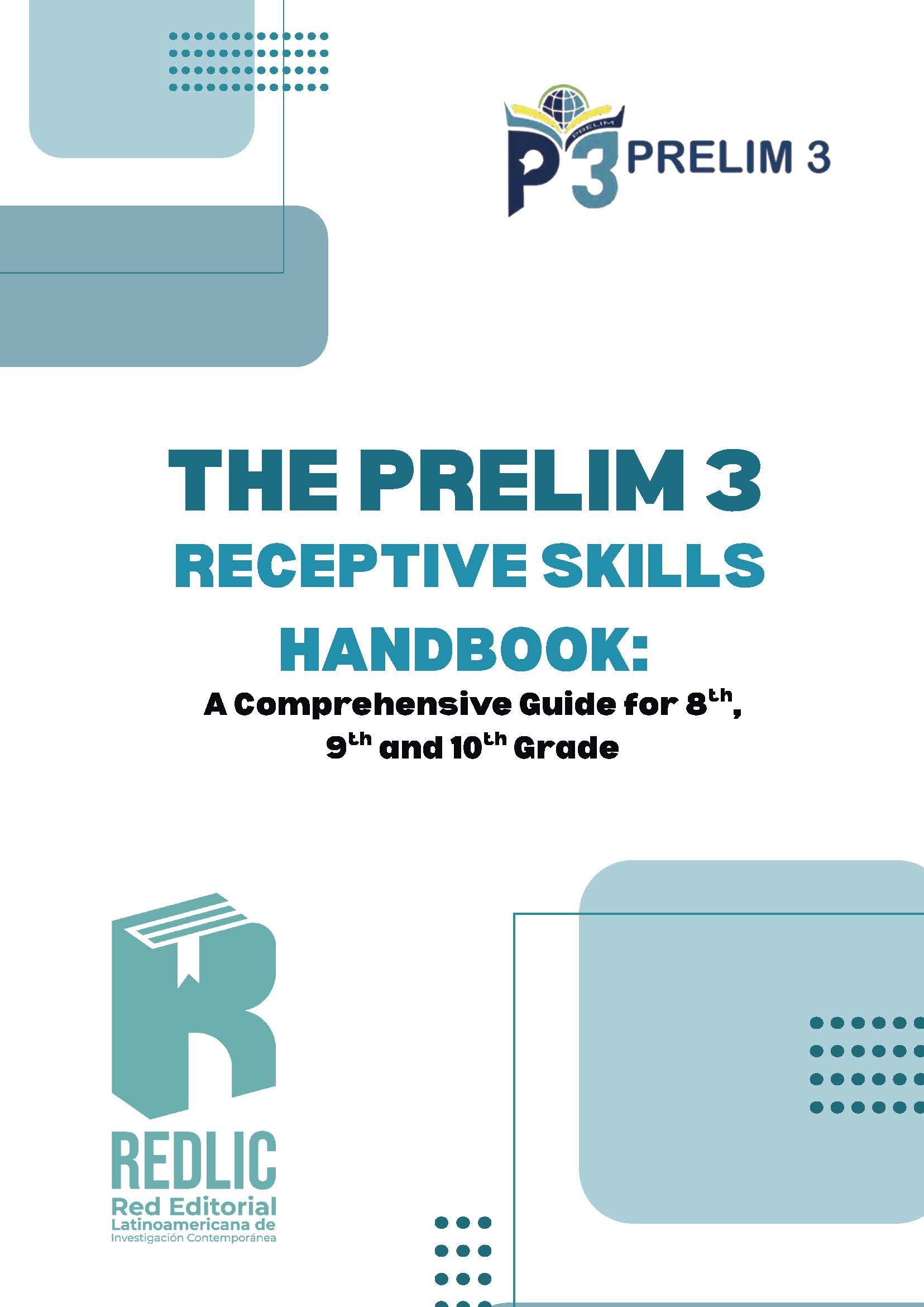Publicación en la Editorial REDLIC
Estimados investigadores:
Nos complace anunciar que contamos con las siguientes vacantes en el Catálogo de Prensa.
1. Editores de sección [7]
2. Editores asociados [10]
Prologue
This pedagogical resource provides a carefully designed set of lesson plans for eighth, ninth, and tenth grade, designed according to the requirements of the Ecuadorian English language curriculum. These plans place a high priority on the development of reading and listening skills as fundamental receptive abilities within a framework that is pertinent to the students' needs. Every class incorporates techniques meant to promote understanding and critical engagement with the English language, considering the distinct linguistic and cultural background of Ecuadorian students.
This resource was created by a team of pedagogical specialists from International House (IH) in Bristol, England, and local English instructors from The National University of Education (UNAE) in Ecuador. It was rigorously tested in local classrooms. The products' practical usefulness and cultural sensitivity were guaranteed by the iterative design process, which was guided by direct input from working educators. This is a sophisticated teaching tool that connects theoretical frameworks and classroom realities. It is the outcome of this collaboration between global experience and local knowledge.
As a result, this work represents a significant addition to Ecuador's educational system by providing educators with an extensive and flexible tool to improve their teaching methods. By providing structured, engaging, and culturally sensitive lesson plans, this work aims to empower educators and cultivate a more effective and enriching English language learning experience for students across the specified grade levels.
Enjoy!
Carrell, P. L., & Eisterhold, J. C. (1988). Schema theory and ESL reading pedagogy. TESOL Quarterly, 22(3), 471-492. https://onlinelibrary.wiley.com/doi/epdf/10.2307/3586613
Duke, N. K., & Pearson, P. D. (2002). Effective practices for developing reading comprehension. In A. E. Farstrup & S. J. Samuels (Eds.), What research has to say about reading instruction (pp. 205-242). International Reading Association. https://faculty.washington.edu/smithant/DukeandPearson.pdf
Field, J. (2008). Listening in the Language Classroom. Cambridge University Press. https://www.scirp.org/journal/paperinformation?paperid=55800
Johnson, D. W., & Johnson, R. T. (1999). Learning together and alone: Cooperative, competitive, and individualistic learning (pp. 99-119) (5th ed.). Boston: Allyn and Bacon. https://www.scirp.org/journal/paperinformation?paperid=23533
Grabe, W., & Stoller, F. L. (2002). Teaching and researching reading. Routledge. https://doi.org/10.4324/9781315726274
Krashen, S. D. (1982). Principles and practice in second language acquisition. Pergamon Press.https://www.sdkrashen.com/content/books/principles_and_practice.pdf
Stanovich, K. E. (1980). Toward an interactive-compensatory model of reading fluency. Reading Research Quarterly, 16(1), 32-71. http://www.keithstanovich.com/Site/Research_on_Reading_files/Stanovich_RRQ_1980.pdf

Estimados investigadores:
Nos complace anunciar que contamos con las siguientes vacantes en el Catálogo de Prensa.
1. Editores de sección [7]
2. Editores asociados [10]
E-ISSN: 2960-8015
Todos los artículos publicados en esta revista se encuentran bajo la licencia Creative Commons — CC BY 4.0 ATRIBUCIÓN 4.0 INTERNACIONAL
![]()
